45friday by skynecta (via https://instagram.com/p/1AgsTGjL9e/)

#45friday by skynecta (via https://instagram.com/p/1AgsTGjL9e/)

#45friday by skynecta (via https://instagram.com/p/1AgsTGjL9e/)

by iamrcup (via https://instagram.com/p/1ApEcBpX47/)
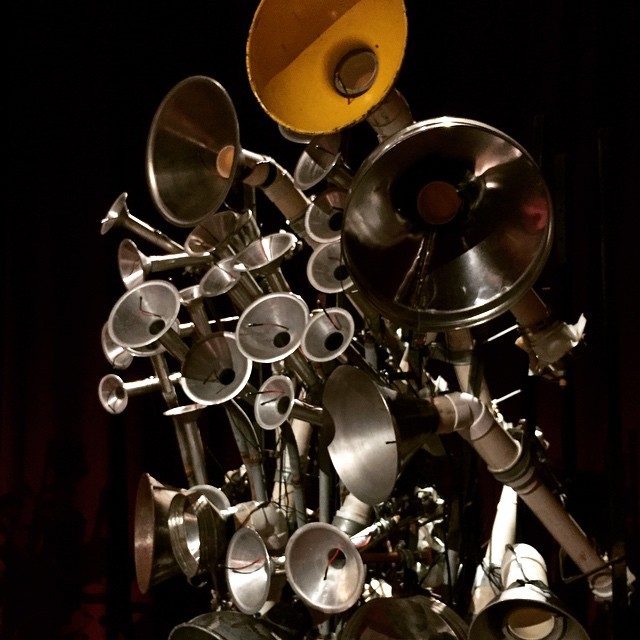
one of the many homemade musical instruments of @cabosanroque @artssantamonica by filastine (via https://instagram.com/p/1Ao9rkoQ2d/)

invisible minute by Benoît Debuisser (via http://flic.kr/p/rCP1n2 )

casajasa6 by brucesflickr (via http://flic.kr/p/rVbVjj )

Roel Funcken / Vanished Void by bunaism (via http://flic.kr/p/rDagnU )

Sin título, técnica mixta. 2014 by joseba.eskubi (via http://flic.kr/p/nBKRtS )

Digital by joseba.eskubi (via http://flic.kr/p/qvyGLw )

Digital by joseba.eskubi (via http://flic.kr/p/qCtF2J )

Digital by joseba.eskubi (via http://flic.kr/p/rreMBe )

Flora by EstherReyes (via http://flic.kr/p/pGdqCM )

Polar Bear by Jess P.C. (via http://flic.kr/p/oLEeXM )

thursday. by (x)99. (via http://flic.kr/p/qYk8FQ )

by aiww (via https://instagram.com/p/091fipqD81/)

the nothing song by tokioshi (via http://flic.kr/p/rcMNFL )

by poda (via http://flic.kr/p/qZMwHt )

gent by barton attila (via http://flic.kr/p/nuaZqt )

Image0005 by barton attila (via http://flic.kr/p/n7jsC2 )

“exponentiating problemification”

Berenice Abbott, Untitled (Soap Bubbles), 1936
“
We knew that our lorry was going to the UK because the trafficker had seen a card that gets posted on the lorries when they come into the waiting area. He’s a Kurdish guy from Iraq and has been doing this for years. I left Syria with nothing, so I’d been working for him in Calais almost two months to pay my way. He said that these lorries, the ones that carry liquids, go straight on to the train without getting X-rayed. The driver was still asleep in the cab, so we had to climb up on to the tank quietly. The hatch on top was locked, but the trafficker cut the wires. We had no idea what was in there, but as soon as he opened it the smell hit us. It was chocolate. We were going to sneak into the UK in a heated tank of liquid chocolate.
–I nearly drowned in chocolate via @teacup (viaiamdanw)

My favorite image this week.
“There is no such thing as uncomfortable silence, just uncomfortable conversation”
–Finnish proverb

gravity
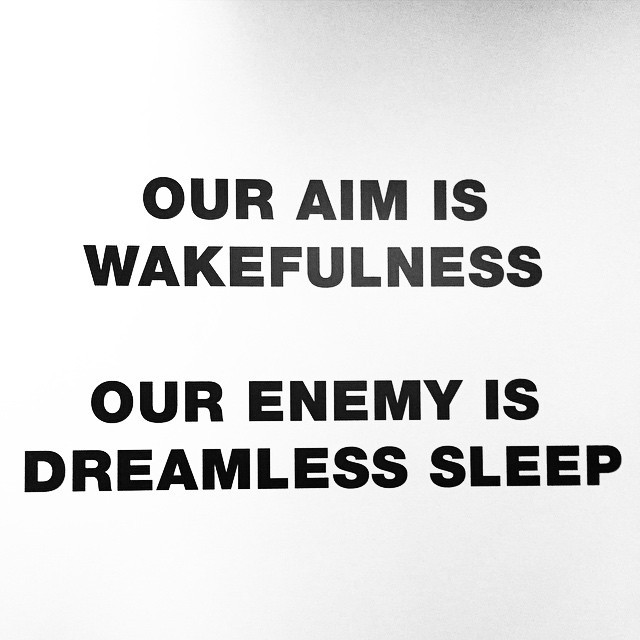
#SODESTROYTHEEXPECTED, #YangLi & #GenesisPOrridge provoke an exciting dialogue between fashion and avant-garde art at @TheOfficialSelfridges #AGender project, London. by amagcuratedby (via https://instagram.com/p/06IyWfi-jV/)

screen size vs. viewing distance

Lazy Sunday by tezcatlipoca (via https://instagram.com/p/mdQyiTsGw-/)

Seaside by gabbiano_nero (via http://flic.kr/p/pMYxXT )

I Sogni Inquietanti della Città. Il Sogno sull'Altra Riva by gabbiano_nero (via http://flic.kr/p/pZwav7 )

Omaggio a Canaletto. Venezia Immaginata. Capriccio con un Canale by gabbiano_nero (via http://flic.kr/p/pkjdFv )

snow 1 by ingrid_b21 (via http://flic.kr/p/rq15ww )
On Monday, the Justice Department charged Carl Mark Force IV, a former DEA agent with 15 years of service at the agency, and Shaun Bridges, 32, with committing numerous instances of fraud while playing lead roles in the investigation into Silk Road, the infamous illicit marketplace that sold drugs, guns, and other goods on the so-called “darknet.”

Aboriginal Australia (Not Suitable for use in Native Title and other Land Claims)
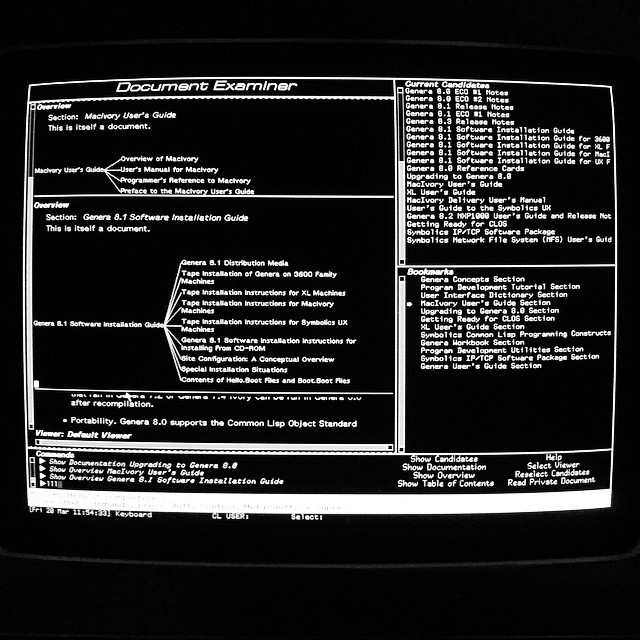
#genera #lisp #environment by tr1nitr0n (via https://instagram.com/p/0jdjijtS7Q/)

1184-2 (via http://flic.kr/p/rze6rz )

1184-3 (via http://flic.kr/p/qWy6qo )

Just in case by Christopher.Michel (via http://flic.kr/p/qWuX9j )

Lucid Dream by Simon Silaidis - UrbanCalligraphy (via http://flic.kr/p/o6caah )

Takeoff by STML (via http://flic.kr/p/iqFZfC )
“Our members do not recoil from the future. We believe that life on earth is embarked on a unique trajectory, one that will not be repeated. We believe that the outward journey has entailed a long and intricate interweaving of the interests of all living things. We believe that the homeward path will entail the systematic unweaving of those threads. We believe we are eminently suited for a role in this process.”
http://www.southsoundchapterwnps.org/fun/interviewfungus.htm

“May 28, 2014: The NorAIS receiver on the Columbus module of ESA is still working well in its 5th year of operations. The SDR (Software Defined Radio) has been upgraded 4 times resulting in substantial improvements to its performance in challenging areas with thousands of ships within the FOV (Field of View), i.e. the Mediterranean, the South China Sea, Gulf of Mexico and the North Sea and Baltic Sea”
–ISS: ColAIS - eoPortal Directory - Satellite Missions (viaiamdanw)


Rudolf Stingel. Untitled, 2010, oil and enamel on canvas

Typeverything.com - Blacklimited monogram by Tarin Yuangtrakul.
“The 2-year study, which was conducted in the Osaka, Kobe and Kyoto regions, utilized footage captured from platform security cameras. Data scientists analyzed 136 different incidents captured on camera. “The results were unexpected,” admitted Naoyoshi Tsujino, who helped conduct the study. “We observed a large majority falling [off the platform] within seconds of getting up.” Kensuke Kawakami, a train station planner said “We realized that randomly reminding passengers wasn’t enough and that we needed to come up with a different plan.”*”
–2-Year Study on Drunken Train Track Falls Prompts Reorientation of Platform Seating | Spoon& Tamago (viaiamdanw)
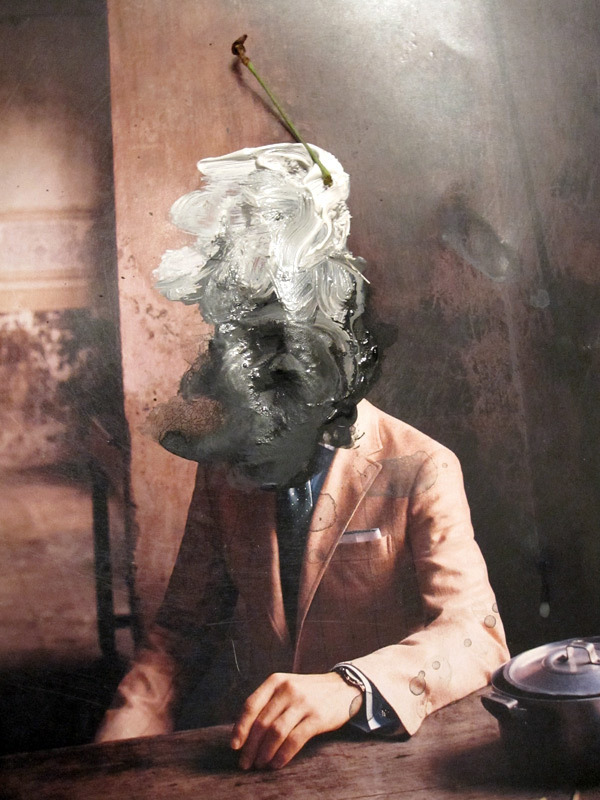
by albino_octopus (via http://flic.kr/p/daeSqy )
“1. Take a quarterly vacation
2. Hold a “retrospective” after projects
3. Write every day
4. Create an “interesting people fund”
5. Keep “tear sheets” to get inspired
6. Nap every day
7. Envision what you will be remembered for
8. Brainstorm at the bar
9. Get out of the building
10. Engage in “morphological synthesis”
–http://99u.com/articles/21137/10-creative-rituals-you-should-steal

stripped. by (x)99. (via http://flic.kr/p/rz8Gtn )

L1230139 by chriswoebken (via http://flic.kr/p/rRQWWA )

A Banbury sheet, c. early 1940s. Used to break German naval Enigma messages in a process invented by Alan Turing, called Banburismus. The only surviving examples of these sheets were found inside the walls of Hut 6 at Bletchley Park in 2013.

Licht hinter Glas2 by catwald (via http://flic.kr/p/rwPnYq )
“Machine-made poetry does not sell very well. It is like machine-made pants for boys; it rips badly if you read it too fast, just as the pants burst dreadfully when the boys who wear them climb too many fences or play leap-frog too hard.”
–“The Poetry Machine,” by Charles Barnard, written in 1827
(viabotpoet)

mermaid’s purse by pete ware (via http://flic.kr/p/qxSTTz )

by A Photon Is Lost (via http://flic.kr/p/dUcSxx )

by A Photon Is Lost (via http://flic.kr/p/jzEt4z )

The Burial of the Dead (ii) by giò batta (via http://flic.kr/p/rDzvaa )

Kosmotropia 1 by Urizen Freaza (via http://flic.kr/p/q813xy )

by 2marsgirlsgo (via http://flic.kr/p/egZqAm )

p4solargraph230610ajesscss by kycamlewis (via http://flic.kr/p/qM9EAZ )

2 pink bags by murray9000 (via http://flic.kr/p/qA4jT7 )

9088 by EstherReyes (via http://flic.kr/p/ryffJh )

CU2030 by ursus minor (via http://flic.kr/p/qU94UC )

by Blanc bec by nlejuste (via http://flic.kr/p/xtrUd )

20150326 (via http://flic.kr/p/ryz32Y )

20150325 (via http://flic.kr/p/rR42fg )

20150324 (via http://flic.kr/p/rR1Yd9 )

20150323 (via http://flic.kr/p/rR3YYH )

20150322 (via http://flic.kr/p/rNQLt3 )

20150321 (via http://flic.kr/p/rR3W1P )

20150319 (via http://flic.kr/p/ryFc1B )

20150318 (via http://flic.kr/p/rR3HPV )

20150317 (via http://flic.kr/p/ryyH7J )

20150316 (via http://flic.kr/p/ryF2En )

20150315 (via http://flic.kr/p/qUk9ie )


© EDanhier

Lygia Clark,
Óculos (1968).
Photo: © Courtesy of World of Lygia Clark Cultural Association. Photo: © 2014 Eduardo Clark.

NASA Astronomy Picture of the Day 2015 March 28
Diamond Rings and Baily’s Beads

Zoomorphic illustration from the 12th-century manuscript Boethius, De musica, f.43v.
De musica contains many beautifully-drawn diagrams, most illustrating the various musical intervals and their mathematical ratios. Some are further enhanced with animal forms (as here), musical instruments or human figures.
This manuscript was originally part of the great library of Christ Church Cathedral Priory in Canterbury, England.
“The 1960s movements were born out of excess, a generation with too much time and certainty; our era, by contrast, is defined by scarcity, how unlikely it is that we’ll come close to achieving those handed-down dreams in the first place. Better, probably, to start reaching elsewhere—if we don’t, we too might win only similar cultural victories, and find instead of a more sustainable adult life only a shallow, push-button version of the sharing economy, a version dictated by some of the only people left in America who don’t even have these problems.”
–Molly Osberg, ‘These Nine People Gave Up the Middle-Class Dream. Was It Worth It?’ (2015)
You’ve probably heard about the Eskimos’ incredible amount of words for snow. Perhaps you’ve also heard that this is in fact a myth. Linguist Geoff Pullum traced the origins of this myth in the article The great Eskimo vocabulary hoax. That article was published in 1989, building on work by the anthropologist Laura Martin first presented in 1982. More than 30 years ago, this myth was already debunked, but this “interesting fact” remains in the public consciousness.
Pullum makes several interesting points in his paper. First and foremost, he cites a dictionary of the West Greenlandic Eskimo language, a language of the Eskimo-Aleut language family, which has only two roots for snow: qaanik, meaning “snow in the air” or “snowflake,” and aput, “snow on the ground.” Secondly, English does not have only one word for snow. There is sleet, hail, slush, blizzard, powder, crust, avalanche, snowflake etc.
Thirdly, the structure of Eskimo languages is such that one can derive practically infinite words for anything. Eskimo languages are polysynthetic, which means that they build most words out of many meaningful units (morphemes), such that a single word may express an entire clause or sentence. English is only mildly synthetic language, meaning it builds words out of a moderate amount of morphemes. For instance, the word foretell consists of the two morphemes fore- and tell. A language with few morphemes per word is called an isolating language. Mandarin Chinese is rather isolating. Compare these two sentences from Mandarin and the Eskimo language Inuktitut:
nî de3ng wo3, wo3 jiu4 ge1n nî qu4 (the numbers indicate tones)
utaqqiguvinga, aullaqatiginiaqpagit
Both sentences mean “If you wait for me, I will go with you.” The difference is that Inuktitut builds single words out of many morphemes to express complex concepts, while Chinese uses separate words where each word contains only one or two morphemes. It’s clear that Inuktitut, with its many inflections, can derive a large number of words from the same root, but this does not reflect any special importance for the word, since the two long words in Inuktitut are built up so that they express the same concept as the eight words in Mandarin.
Pullum further slags the concept of numerous words for snow by pointing out that technical vocabulary regularly makes detailed distinctions that the layman would not think to make. A graphic designer has a large number of words to describe text: what they would describe as 72 pt Helvetica Condensed center-aligned would perhaps be described by a layman as “huge-ass text.” It’s not interesting at all, says Pullum, that people with specialist competence would make very narrow distinctions that people without such specialist knowledge would not. Thus, even if Eskimos did have a hundred words for snow, this would not be particularly interesting.
This point is arguable. Yes, technical language is more precise than layman’s language. But the fact that different languages or specialist groups make narrow distinctions is, in fact, of anthropological, if not linguistic interest. It reminds us that it’s possible to divide up the semantic space—the space of meanings—in different ways than those we’re familiar with. This point may be very familiar to linguists who study diverse languages around the globe, but it is still interesting to those of us who are not linguists and aren’t familiar with more than one or two languages. One example of fuzzy versus precise distinctions lies in kinship terms. Mandarin distinguishes eight types of cousin, for instance “elder male paternal cousin,” but lacks a word that means “any kind of cousin,” like English has.
So the interesting factoid about Eskimos and snow is a myth. But are there societies or languages that do, in fact, have huge amounts of words for concepts that English lumps together into one word? This article gives us another factoid to replace the one about Eskimos and snow. It must be taken with a grain of salt, as the article only makes a vague reference to a dictionary, and does not properly cite a source. Nevertheless, if it is true, it inspires the same kind of awe that the Eskimo snow hoax. The factoid concerns the West African language Fula, spoken by an ethnic group that were traditionally cattle herders. According to the article, Fula has more than eighty words for “cattle,” making such distinctions as:
… guddiri ‘bull without a tail’, wudde ‘cow without a tail’, jaabuye ‘cow with a large navel’, lelwaaye ‘cattle with eyes like a gazelle’, gerlaaye ‘cattle that is like a bush-fowl’, happuye ‘cow in milk after her calf has died’, mbutuye ‘cow whose calf has been killed so that she may be fattened’, and other useful terms. A number of different types of cattle are distinguished by their horns: elliinge ‘cattle with upright horns’, gajje ‘cattle with horns twisted back’ (also called mooro), hippe ‘cattle with horns drooping forward’, hogole ‘cattle with horns almost meeting’, lettooye ‘cattle with one horn up and the other drooping’, wijaaye ‘cattle with horns drooping towards the ears’, tolle ‘cow with one horn’, and wumale ‘cow without horns’.I’m wary of spreading another myth, and I don’t speak Fula, so I can’t vouch for this. But still. Haven’t you ever wanted a word for a cow with a large navel?

*Hey look, “Space Invader” is the first street-artist to tag outer space.

the wanderers by paolobarzman (via http://flic.kr/p/r7pp1c )

Huge source of government data now open to the public at Data.gov. Climate, weather, precipitation, food access, crime, even the weight of students (e.g., health indicators). These new data bases are one of Obama’s pet projects. There are nearly 200,000 sets!
There’s a nice climate data base that really needs to be mined. There’s also a data and tools set for ecosystems vulnerability under climate. Killer stuff.
Launch of Ecosystem-Vulnerability theme of Climate.Data.Gov
The U.S. government has released a collection of data and tools that will advance planning capabilities for the impacts of climate change on our nation’s ecosystems. The data and tools will provide information and will help to stimulate innovation in preparing for climate impacts on fire regimes, water availability, carbon sequestration, biodiversity conservation, ocean health, and the spread of invasive species. Here are some examples of how the data and tools could be used:
- Help communities and natural resource managers determine if they are currently at risk from wildfires and if they will be impacted in the future due to wildfires becoming more prevalent and severe;
- Provide information to the public on their sources of water and their sensitivities to climate change;
- Aid in the public understanding of the role that ecosystems play in mitigating rising carbon dioxide levels due to their absorbing and storing of carbon, as well as how land management activities may influence storage capabilities;
- Identify the potential impacts of climate change on rare and endangered species, iconic species, and ecosystems;
- Identify which invasive species may threaten specific locations and their impacts on local communities and their economies. This effort will contribute to early detection, rapid response activities.

Should trees have rights? What is their legal status?If non-humans, like corporations and animals, have a variety of legal rights, shouldn’t trees also be offered similar protectionary rights? The law has changed and matured over time, but trees seem to be left behind. Why?
In this influential work, Christopher Stone argues that special guardians be empowered to speak for the “voiceless” elements in nature, in effect, to give legal standing in the court of law to endangered species and threatened forests.
Stone showed how the law has progressed over time to confer rights upon persons or entities that society previously had considered incapable or unworthy of having rights.
Children, slaves, women, Native Americans, racial minorities, aliens, fetuses, endangered species—all have been the beneficiaries of this drive to give legal voice and legal rights to those who once lacked both voice and rights. So, too, argued Stone, has the law recognized corporations and other entities as having legal rights. It was not always so…
“Our industrial civilization has been pouring carbon dioxide into the atmosphere at a great rate. By the year 2000 we will have added about 70 percent more carbon dioxide to the atmosphere. If it remained, it would have a very marked warming effect on the earth’s climate, but most of it will probably be absorbed by the oceans. Conceivably, however, it could cause significant melting of the great icecaps and raise sea levels in time.”
–
From the
1958 U.S. National Academy of Sciences publication,
Planet Earth: Mystery With100,000 Clues.
*Way to go with the futurism, Space Age scientists (viabrucesterling)
(viaclimateadaptation)

xerox scan of collage by james roemer

Comet 67P - flyby context by europeanspaceagency (via http://flic.kr/p/rvjo5k )

Aral Sea by europeanspaceagency (via http://flic.kr/p/ruX5YX )

Ontario-born Ellen Jewett creates delicate sculptures that fuse flora and fauna.
#art #weirdart #creepyart #darkart #fantasy #dream #surrealism #instaart #instagood #sculpture #collidemag by collidemag (via https://instagram.com/p/0uafdpH1YQ/)
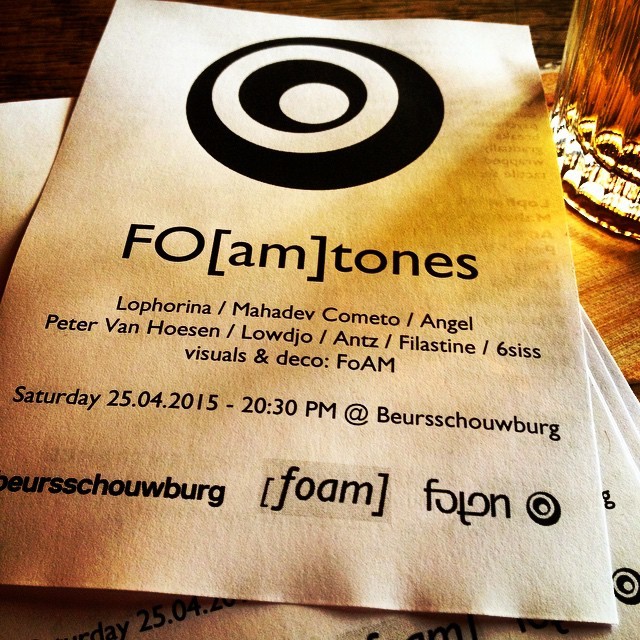
Doing my promo tour for #foamtones - 25th of April @beursschouwburg totally FREE!! b there or b square by lowdjo (via https://instagram.com/p/0urWH_oh5t/)
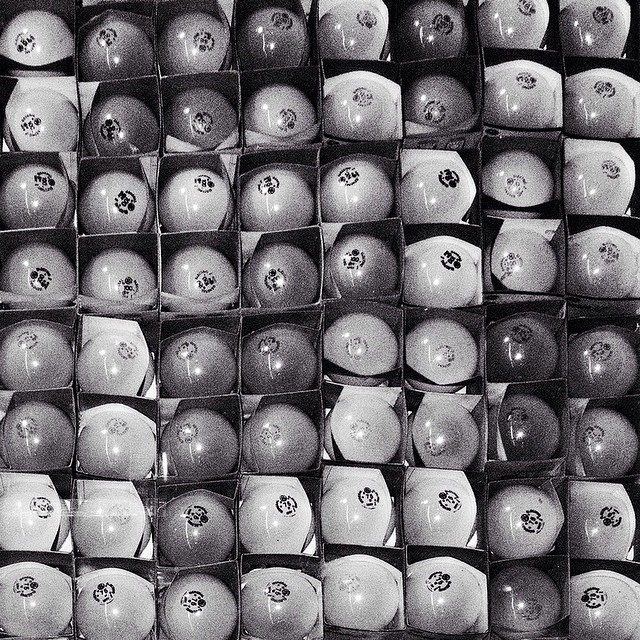
Lightbulbs stacked in a Brooklyn bodega window. I’ve been feeling really melancholy about the impending obsolescence of tungsten light bulbs. by claytoncubitt (via https://instagram.com/p/0vghN6JXr3/)

#darkcavities, last week - #carlsbergcaverns - trying hard to turn my job into life as a romantic adventure - by monikabielskyte (via https://instagram.com/p/0v0D__QSxB/)


This simulation depicts a circular source of magnetic field line intersections generating a surface curling around in the presence of a complex solar magnetic field.
“There can be no Religion more true or just, than to know the things that are.”
–Hermes Trimegistus (viahijodeporos)

by ryder_ripps http://ift.tt/1AD9oPi

“It’s a small museum, but it really captures the Australian spirit.”

20150313 (via http://flic.kr/p/rvDYaX )

20150312 (via http://flic.kr/p/rvxBpm )